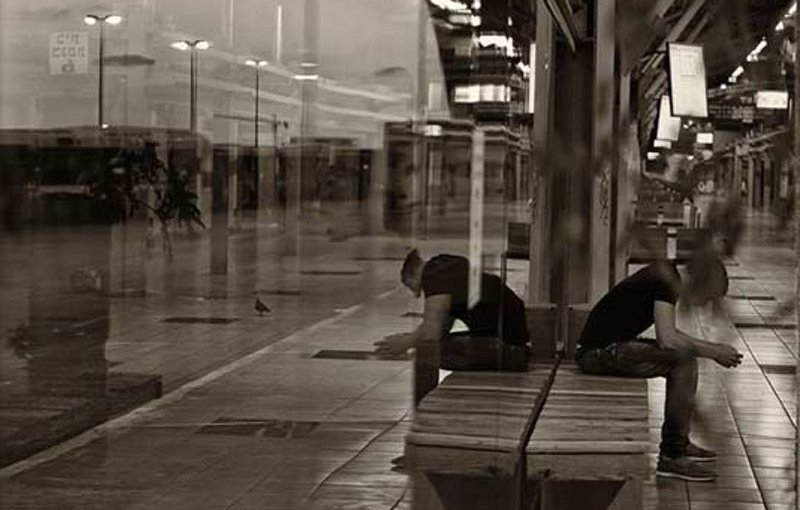Experiments in Fine Art Photography
Interview by Jennifer Nelson, WTP Feature Writer
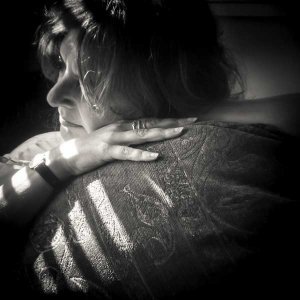 Amy Kanka Valadarsky is a photographer based in Even Yehuda, Israel. She was born in 1964 in Romania, where she spent the first eight years of her life before moving to Israel with her family. After graduating as a software engineer, she worked twenty-five years designing and implementing software solutions throughout the world. In 2014, she left the telecommunications industry, starting a new chapter as a fine art photographer.
Amy Kanka Valadarsky is a photographer based in Even Yehuda, Israel. She was born in 1964 in Romania, where she spent the first eight years of her life before moving to Israel with her family. After graduating as a software engineer, she worked twenty-five years designing and implementing software solutions throughout the world. In 2014, she left the telecommunications industry, starting a new chapter as a fine art photographer.
Kanka Valadarsky’s work was selected as a Top 50 photography portfolio in the 2017 Critical Mass competition offered by Photolucida, a nonprofit in Portland, Oregon. Her photos were featured in SHOTS magazine; the online photography website Rfotofolio; The Hand magazine; Black and White magazine; and Lenscratch, a photography blog. Her work has been exhibited at the Photo L.A. art exposition, Los Angeles Center for Photography, The Center for Photographic Art in Carmel, dnj Gallery and bG Gallery in Santa Monica, California as well as in Rome, Italy and several galleries in Israel. She earned a bachelor’s degree in computer science from Technion in Israel. From 2011 to 2014, she studied metal work at Yael Shkedi’s private studio in Kfar Saba, Israel becoming a certified goldsmith.
Nelson: What enticed you to switch careers from telecommunications to photography?
Kanka Valadarsky: My journey from telecommunications to art started when, approaching the age of fifty, I left the high-tech world to explore new avenues. After twenty-five years of creating intangible software products, I felt the need to do something concrete and creative, use my hands not just my head. By mere chance, I found an online beading class that eventually led to four years of jewelry making and a certified goldsmith diploma. Selling jewelry online required good photographs—my backdoor to the world of photography. A year later, my husband and I moved to Santa Monica, California, another turning point, this time from jewelry design to fine art photography. Living in the Los Angeles area, I was fortunate to study with Aline Smithson at the Los Angeles Center of Photography, as well as discover the magic of the darkroom at Santa Monica College.
Nelson: How did studying at Yael Shkedi’s private studio help you in developing your work?
Kanka Valadarsky: Even though I am currently not creating jewelry, my studies at Yael Shkedi’s metalsmith studio offered a first glimpse into the workings of the art world, as well as a chance to start defining my aesthetic preferences. The hours spent at the goldsmith bench taught me patience, the importance of finishing touches, and a growing appreciation toward good craftsmanship. I discovered the joy of creating objects in traditions that went back hundreds of years and realized the central role of nature in inspiring the look and feel of the pieces I was creating. I loved “flirting” with molten silver, allowing it to create organic shapes, guided rather than controlled by the torch in my hand. Looking back, I see a lot threads connecting those early jewelry pieces to the photography-based art I am making nowadays.
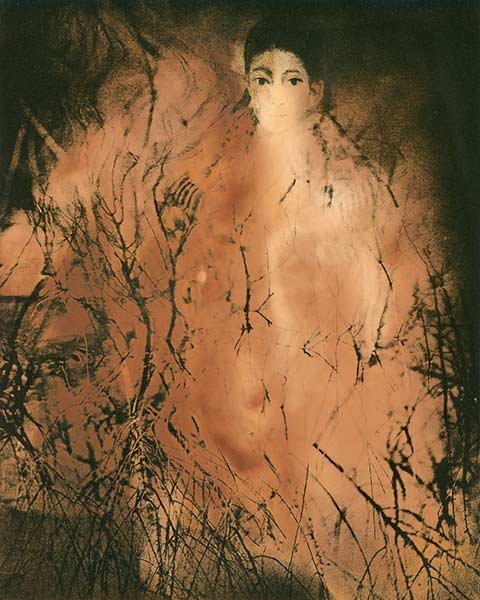
Nelson: In October 2018, you went to a retrospective exhibit of Frida Kahlo at the Hungarian National Gallery. Please elaborate on why you felt it important to depict this artist in your Meeting Frida series as well as on the techniques you use, which include burning shades of gold, red, and amber over a black-and-white palette, and embracing imperfections.
Kanka Valadarsky: Meeting Frida is a great example to illustrate my working process. This series was triggered by a very emotional response I had to Frida Kahlo’s work. Her honesty and courage to expose emotions figuratively and metaphorically had an immediate, visceral impact. From the moment I stood in front of her “Broken Column” painting, I knew something meaningful was happening, although I had no idea what or why. It took weeks of working with the iPhone images I took at the exhibition, to realize that her paintings created a new way to look at myself, seeing things through her eyes.
Frida’s art enabled me to express myself. The initial step of the working process consisted of creating layered digital images on my computer, starting with one of the iPhone images I took at the exhibition. I kept playing with different combinations until the result felt right. These digital photomontages were the starting point for the second half of the process, which was printing. Printing to me is not a technical step, but an integral part of the creative process that has as much impact on the final object as the capture/creation of the image. I wanted the printing process to express the emotional nature of the work and give voice to the darker, more complex side of these images without compromising on the beauty.
This led to modifying the classic darkroom process, taking the light-sensitive photographic paper mid-process into the light, and coercing colors out of black and white. As the images were exposed to light, I guided rather than controlled the process, painting with chemicals that influenced the impact of light on the silver grains embedded in the paper. Needless to say, chance played a significant role in creating the final result and not every print was a success. It took weeks until one by one the final images were born.
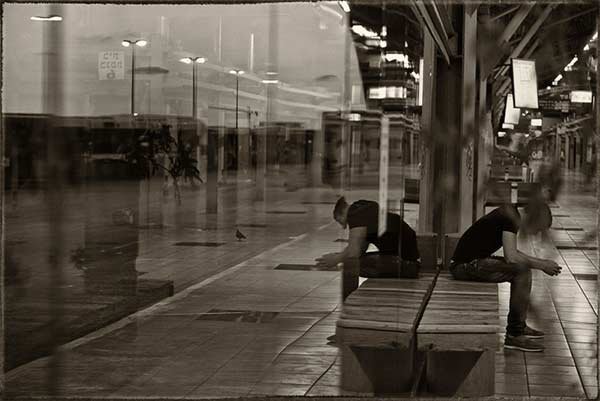
Nelson: In “The Bus Left the Station,” you create a haunting image using shadows, black-and-white film, and reflections. What message do you intend to convey to the viewer, and why did you photograph this once grandiose building in Tel Aviv?
Kanka Valadarsky: I photographed this specific image while exploring the Central Station, waiting for a location-based performance to start. It was my first time at the Central Station. I was stunned by the conflicting vibes that filled the air: a mixture of neglect and poverty with fabulous street art and performance. A sense of danger lurked under the general commotion, desolation mixed with beauty that I found utterly fascinating. In “The Bus Left The Station,” the lone man sitting on the bench seemed to channel the energy of the space, a perfect metaphor for the conveying unsettling atmosphere of the place.
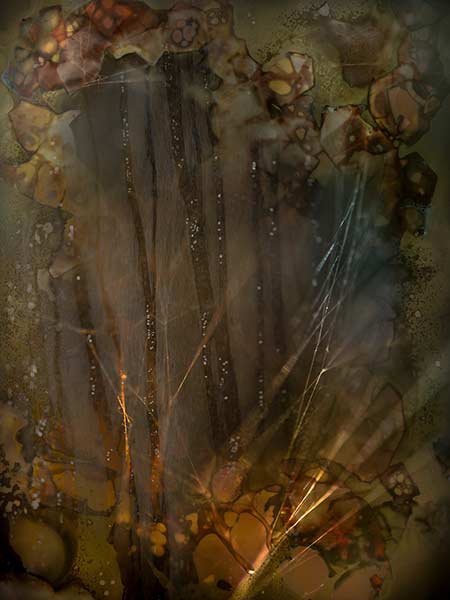
Nelson: In the Adama series, you use color, light, and abstraction to depict nature. What inspired you to do this series, and what techniques did you use?
Kanka Valadarsky: Adama was the first series of images created after returning from the United States to Israel. For me, the garden was (still is) a central part of the house. It broke my heart to see how neglected it was and for a few months, a lot of time and energy was devoted to its cleanup and restoration. I felt a strong sense of reconnecting with the land, both physically, working in the garden, as well as metaphorically, being back in the country where I grew up—being home. Adama is a visual expression of the significance of the connection between us humans and earth. I already touched on the importance of the creative process in conveying the message.
In this series, every image started with a Lumen print. A Lumen print is the resulting imprint of objects that are placed on photographic paper and exposed to natural light. For example, when weeding the garden, I noticed the delicacy of the plants I was pulling out, and realized that what I consider a weed is purely subjective. In a different place, the same plant could be regarded as ornamental. Rather than throwing the weeds away, I placed them on photographic paper and ended up with a graceful imprint where they almost seemed to dance. After scanning the print, I layered it with additional images to enhance the sense of magic and “A Place Under the Sun” was born.
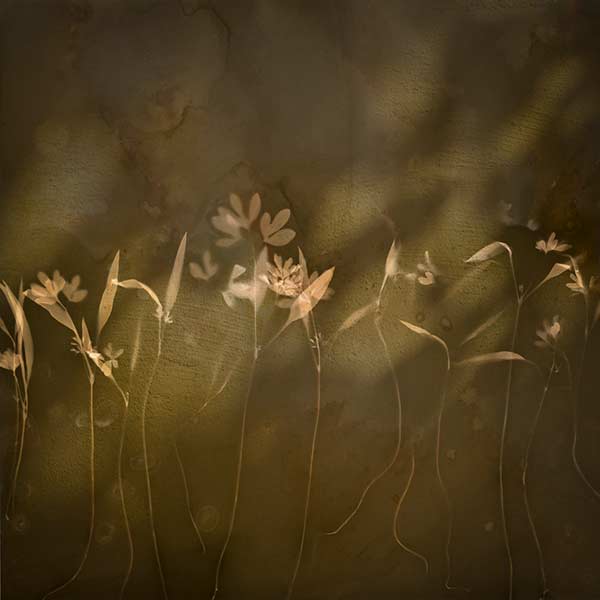
Nelson: In the series Between Here and Then, you took vintage family photos and layered them with digital images of ghostly tree trunks, tulips, and fabric. Can you talk about this layering, how exactly it was achieved? And about the stories you intend to convey, as well as the origins of this series?
Kanka Valadarsky: Between Here and Then has its roots in missing my family. At the time, my husband and I were living in the United States, my sons and mom were in Israel. This made it hard to share with them the details of our life. This only increased the frustration of not being able to share whom I had become with the people who mean the world to me and had passed away—my grandmother and my dad. Random thoughts of “I wonder what Grandma would think about it” turned into hours of playing on the computer with scanned old family photos, combining them in Photoshop with photographs I had taken on our various trips. This process resulted in the series Between Here and Then, an exploration of the role of family, environment, and our own decisions in shaping who we are.
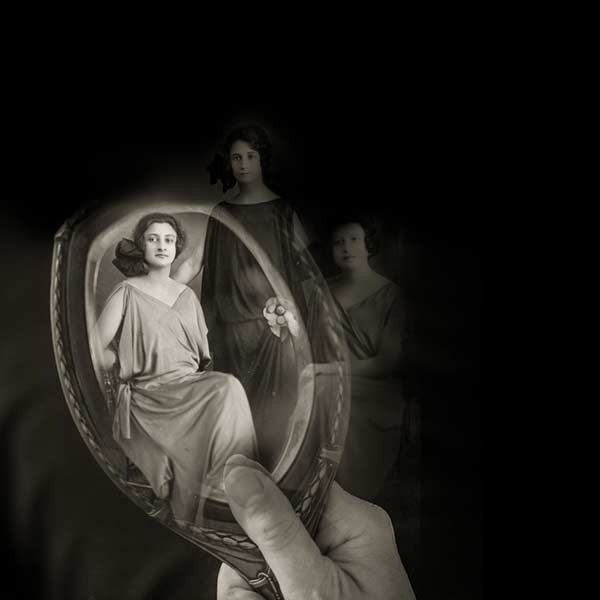
Nelson: How do you see your artwork evolving in the future?
Kanka Valadarsky: In the future, I would like to deepen my understanding of the darkroom/alternative printing processes and find new ways of combining them with our digital-era tools. I would also like to push the two-dimensional boundaries of the paper, create three-dimensional objects, combining photography, painting, and maybe a few more things. The sky is the limit.
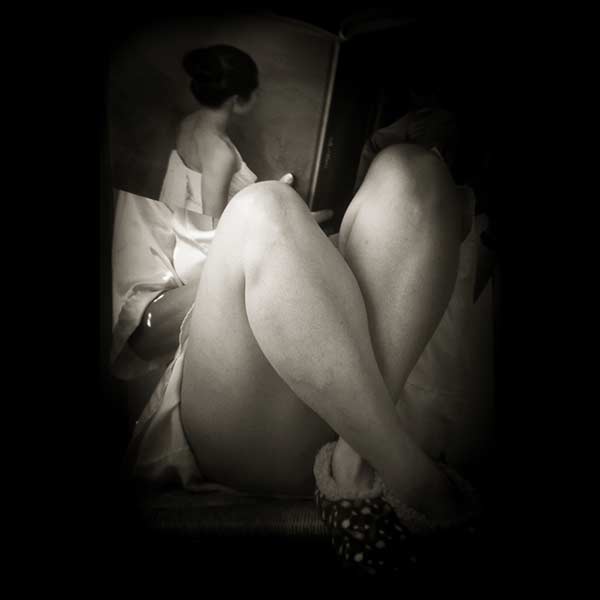
See Amy Kanka Valadarsky’s work in WTP Vol. VII #2.
Copyright 2019 Woven Tale Press LLC. All Rights Reserved.

